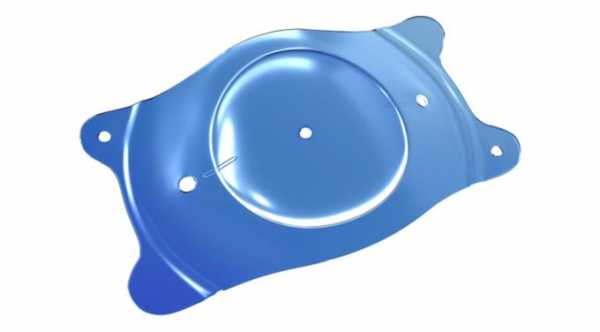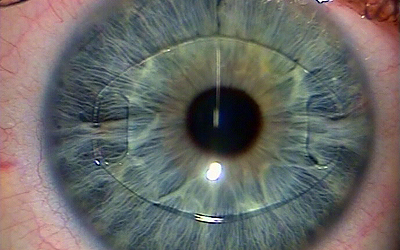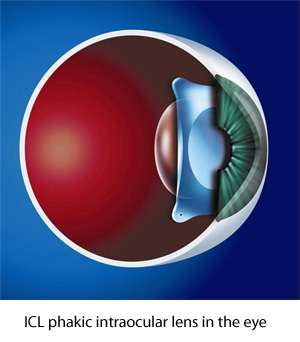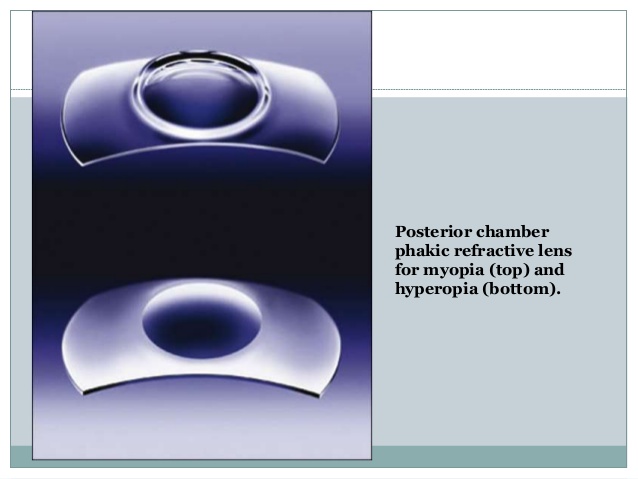
Phakic Intraocular Lens Implant
Phakic intraocular lens implant is a type of refractive surgery in which special type of artificial intraocular lenses are implanted inside the eye either in the anterior chamber or posterior chamber in order to correct high refractive errors.
The difference between these intraocular lens and those lenses implanted during cataract surgery is that they are implanted in the presence of the natural crystalline lens in order to correct refractive errors while in cataract surgery, the natural lens which became opacified is removed and is replaced by artificial intraocular lens.
Many clinical trials have shown better quality of vision and better visual acuities than lasik for patients with high myopia because it provides less high order aberration which can be a problem in Lasik for patients with more than -9.0 D.
Types of Phakic Intraocular lens implant
1- Angle supported PIOLS
This type of lens is implanted in the anterior chamber, infront of the iris. Old design associated with high corneal endothelial cells loss while the new design overcomes this problem. Common complications are distortion of the pupil and night vision problems such as glare.
 2- Iris fixated PIOLs
2- Iris fixated PIOLs
Implanted in the anterior chamber with special claws that are attached to the iris to fixate the lens in place.
3- Posterior Chamber PIOLs
 This type of lens is implanted in the posterior chamber, in front of the crystalline lens and behind the iris. Two types:
This type of lens is implanted in the posterior chamber, in front of the crystalline lens and behind the iris. Two types:
- ICL. Implantable Contact Lens
One Piece lens that is made from Collamer. This material has high permeability feature that allow gas and metabolites to pass though the crystalline lens.
This feature helps to reduce the risk of cataract.There is a space between the back surface of this implanted lens and the crystalline lens and this space is called Vault.
Vault shouldn’t be small to prevent any contact between the implant and the crystalline lens and shouldn’t be high to cause contact between the front surface of the implanted lens and the back surface of the iris.
 Contact between iris and lens can cause angle closure glaucoma.
Contact between iris and lens can cause angle closure glaucoma.
- BPRL. Phakic Refractive Lens
Single piece that is made from Silicone. It is implanted in the posterior chamber. The edge of the lens touches the zonules of the crystalline lens and there is no attachment between the lens and the front surface of the natural lens.
Criteria for Phakic Intraocular lens
In order to decrease post operation complications of intraocular lens implantation, patients should be good candidates and should be selected for phakic intraocular lens implant according to certain criteria.
1- Age: between 21 and 44 years old.
2- Stable refractive error in the last 6 months with less than 0.5 D change.
3- Patient have high refractive errors such as high myopia and astigmatism.
4- Patient is not happy with his vision with spectacles or contact lenses.
5- Patient is not a good candidate for excimer Lasik Eye Surgery.
6- The natural crystalline lens should be clear with no cataract.
7- No corneal diseases.
8- No glaucoma. Phakic intraocular lens can elevate intraocular pressure.
9- No uveitis.
10- Corneal Endothelial cells are at least 2000 Cells/mm. This is very important because intraocular lens can cause loss of endothelial cells. Corneal Endothelial cells that are less than that can cause corneal edema and Bullous Keratopathy.
11- Anterior chamber depth is at least 2.8 mm (measured from the corneal endothelial layer to the front surface of the natural lens) or 3.2 mm from the epithelial layer of the cornea to the front surface of the natural lens.
12- Pupil Diameter of Less than 6 mm.
13- Normal Optic disc and retina
The upper limits of lasik and PRK for correction of myopic patient are -12D, +4D to +6D for hyperopia and 4-5D for astigmatism because above those limits, the risk of complications of them can increase.
Phakic IOL can correct myopia from -3.00 D to - 20.00 D, hyperopia from +3.00 D to + 17.00 D.
Till now, only spherical correction by Phakic IOL is approved by FDA but astigmatism can be corrected up to - 6.00 D by using toric Phakic IOLs.
What are the advantages of Phakic Intraocular Lenses?
1- Correction of high refractive errors.
2- Excellent best corrected vision.
3- Excellent stability of vision.
4- Excellent Quality of vision due to decrease of high order aberration.
5- Patient can preserve accommodation because the natural crystalline lens is not removed. Natural crystalline lens is the one responsible for accommodation and patients who undergo cataract eye surgery will loss their accommodation.
6- It is a reversible procedure in which the implantation can be removed from the eye.
What are the disadvantages of Phakic Intraocular Lens?
1- This is an intraocular procedure with the risk of infection which is called endophthalmitis.
2- Can cause irreversible damage to cornea by reducing the number of endothelial cells especially with those Phakic IOL that implanted in the anterior chamber.
3- Damage to the natural clear lens causing cataract.
4- Can cause elevation of intraocular pressure which can be transient or can become chronic causing glaucoma. Causes of this high intraocular pressure are: inadequate removal of viscoelastic during surgery causing high intraocular pressure in the early postoperative day. Acute angle closure Glaucoma can occur due to pupillary block which occurs more with posterior chamber lens than anterior chamber lens. That is way laser or surgical iridectomy is indicated pre-operative or during surgery.
5- Uveitis which can be acute and transient or can be chronic.
6- Retinal Detachment an occur after surgery with an incidence of 2.8% of patients with Phakic IOL.


